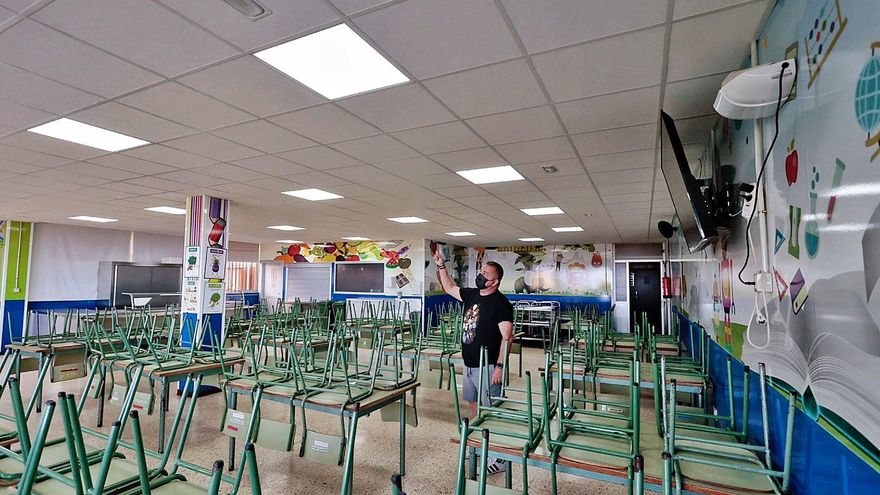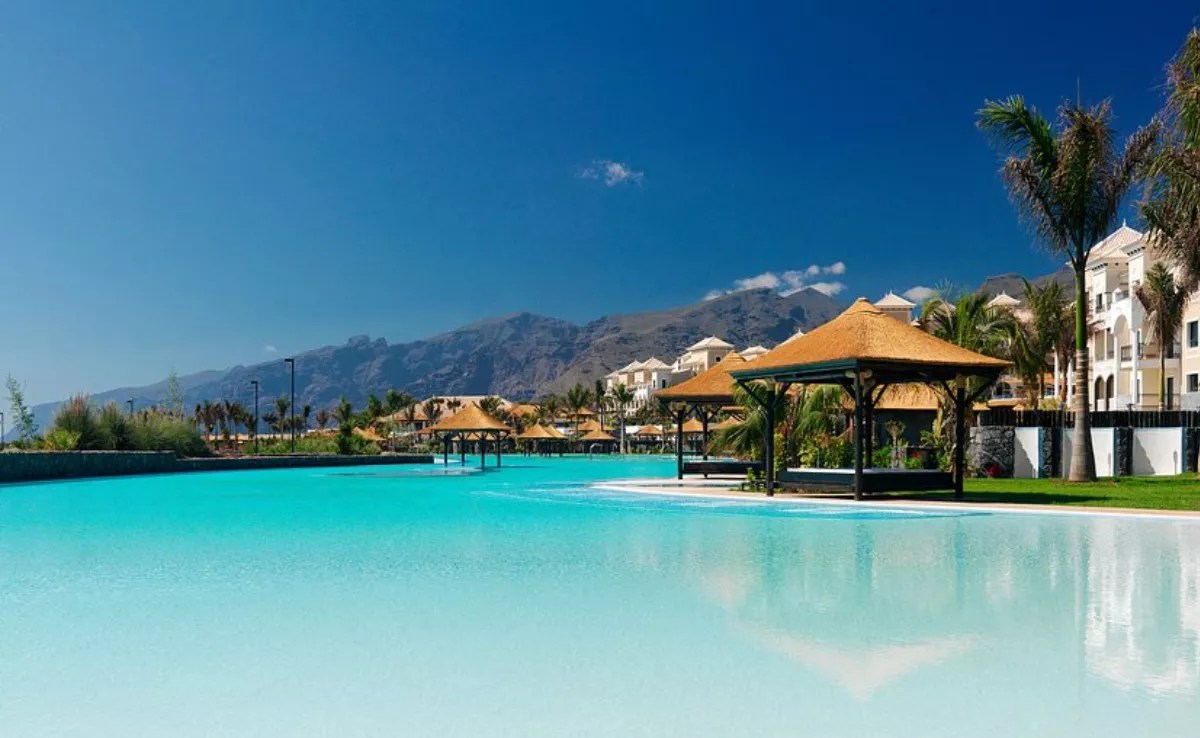
The facilities of the northern educational center have been carefully prepared by the management team so that the next course can accommodate 6 deaf children, 9 autistic and 7 with another type of disability with the same conditions as their peers. A great pride for the director, José Juan Cruz.
Inclusion and illusion. These are the two words with which José Juan Cruz, director of CEIP Ernesto Castro Fariñas, sums up the moment of this school located in the municipality of Tacoronte. During the summer, this preferential educational attention center for students with disabilities is set up. Its complete innovation project starts next year and is a pioneer in Tenerife and the Canary Islands. In addition to integrating, as before, children with hearing problems (there will be six), now it receives with all the guarantees nine autistic and seven with other disabilities. All of the 360 enrolled will have the same conditions to learn. Inclusion in public school.
The tour begins with face A. That is, the positive. A soundproof dining room opens the route that leads to visiting classrooms prepared for specific audiovisuals where tennis balls stand out on the legs of the desks. “To prevent the sound from squeaking,” explains the director. Another class draws the setting for a green background chroma in which children from summer camp participate in dress rehearsal for what will happen next year. Cross guides to the exterior spaces of a huge enclosure. The setting to put the idea of outdoor learning into practice. For breakfast, reading or whatever it takes.
But the director also has to –and wants– to show face B. He sums it up: “Here there is an institutional neglect that affects infrastructures.” He details it: «We cannot afford any work due to legality and budget, but they are badly needed. I believe that the City Council of Tacoronte, directly responsible for the small improvements, and the Ministry do not do what they should in this regard. In the must enter the broken light bulbs or the dampness in classrooms that, assesses “are leaks in the winter – hard – of this town”. On the outside, he describes “undergrowth areas not cleared for a long time,” jungles where children should enjoy themselves. The visit reaches the bowels of “a school with enormous possibilities in spaces, but wasted.”
A pause. Breathe and continue to explain that «the center tries to respond to each individual need because not all students get the same technical or personal help ». The director insists on this thesis: “Each child is totally different and needs a personalized job.” He sums it up: «In the first place, that of one Hearing and Language teacher for every five students with this disability. To help him work with his peers and solve any difficulties.
Preferably, Cruz details, “we work within the classroom as a pedagogical couple, although sometimes a more specific task is necessary in the area of Hearing and Language.” The center has the help of the LSE (Spanish Sign Language Specialists) who work with those who need to learn this tool. From a technical point of view, Castro Fariñas, Cruz emphasizes, “has 4 inclusive classrooms and is the only one in Spain with such a large number of classes for these characteristics.”
What is an inclusive classroom? José Juan himself asks. The answer: that adapted to students with disabilities. For that, he has a state-of-the-art device. Thanks to this technology, what the teacher talks about in class reaches cochlear implants or hearing aids via Bluetooth. The teacher has a sound column for the rest of the students. It arrives without noise and with perfect quality. The computer equipment in the classroom is linked to this device and any noise reaches the hearing impaired student in the correct way.
The fight against noise is a continuous war in this center. That is why spaces have been soundproofed with the aim that sound quality helps improve student learning. Classrooms for regular teaching, music or the dining room. For now, because the acoustic conditioning does not stop. In this sense, sirens have been changed for lights and balls have been incorporated into chairs and tables to avoid fanfare.
Another factor: the pandemic and its consequences. They have created a powerful communication barrier for everyone, but especially for those with communication difficulties. Inclusive (transparent) masks have been a partial solution by facilitating lip reading and certain expressions, but they have not given the answer that students need.
Since the 2019-2020 academic year, the center has incorporated a project called We talk and sign where all students have received a weekly hour of Spanish Sign Language (LSE). All except those who, by medical prescription, had not recommended the use of LSE due to the adaptation process of cochlear implants.
Last year, Fasican (Federation of Deaf People Associations of the Canary Islands) proposed a bilingual education project in LSE in order to expand the work carried out and give a correct response to this communication need. The General Directorate for Planning, Innovation and Quality of the Government of the Canary Islands, values Cruz, “supports us in this and invites us to go one step further. Expand the comprehensive communication work to deaf people with the student with Autism Spectrum Disorder or those with communication problems, such as intellectual disability or other pathologies.
Thus was born the global and inclusive initiative for the next course. Based on working on communication in a comprehensive way with more inclusive classrooms, better sound quality in class and the rest of the center’s spaces, I work with digital communication tools and bilingual teaching at LS E.
Cruz values ”the support and encouragement of Gregorio Cabrera, General Director of Planning, Innovation and Quality” for a pioneering initiative to give a “real and personalized” response to the communication difficulties of students from an inclusive point of view.
I work in the classroom from September and avant-garde pedagogical complement with a dozen actions in parallel. With the support of associations such as Fasican or Funcasor and the Barajas Clinic to monitor the results and open the door to other centers. The objective is clear: to maintain the contribution to a public, inclusive and quality school. Illusion for inclusion in school.















